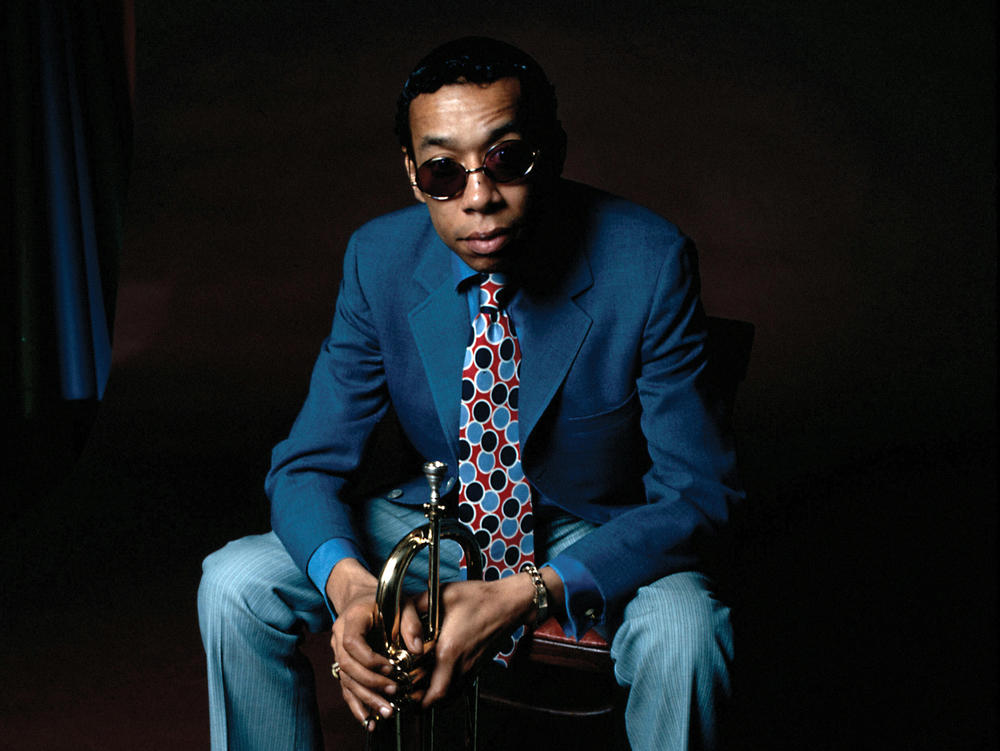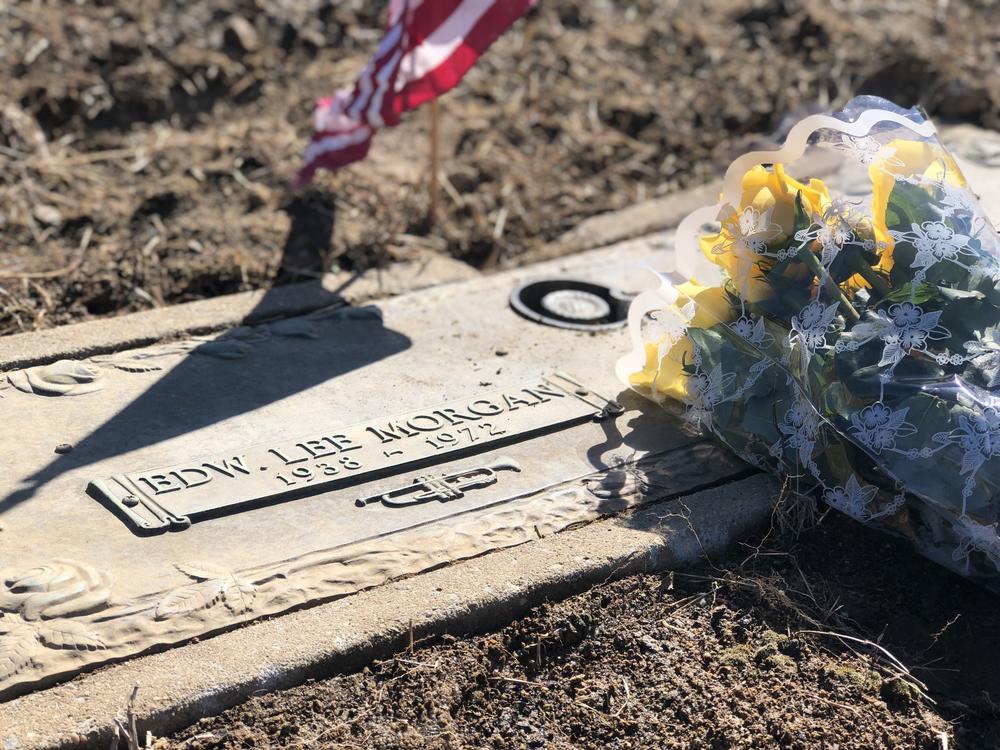Section Branding
Header Content
How a jazz legend's resting place was lost and found, 50 years after his tragic death
Primary Content
Lee Morgan's final resting place is a hillside plot in a modest cemetery in Bucks County, brushing up against the Pennsylvania Turnpike. On a recent afternoon, the winter sun cast stark shadows across his grave marker, which has a trumpet engraved beneath his name, EDW. LEE MORGAN, and the years 1938 to 1972 — the measure of a life cut tragically short.
Morgan was a hard-bop trumpeter of spectacular prowess and undeniable charisma, with a discography that spans some of the most iconic Blue Note albums of the 1960s. He's also one of jazz's most infamous casualties, due to the circumstances of his death almost exactly 50 years ago, on Feb. 19, 1972. Morgan was playing a gig at the East Village club Slugs' Saloon. Between sets early Saturday morning, he had an altercation with his common-law wife, Helen, who shot him. A snowstorm delayed the arrival of medical help, and Morgan bled to death from his injury.
This story received a powerful and sensitive treatment in the 2016 documentary I Called Him Morgan, by Swedish filmmaker Kasper Collin. Now streaming on Netflix, it's an empathetic portrait of both Lee and Helen Morgan, and a clear-eyed view on their relationship, which helped pull him back from the depths of a serious heroin addiction. Rather than a conventional documentary arc, it conjures an aura of reminiscence and conjecture; among its subtexts is a wistful notion of what the world lost with Morgan's shocking departure.
Last year, haunted in part by that feeling, a jazz fan named Tommy Maguire went out in search of Morgan's grave, which he had learned was a short drive from his house in the Philadelphia suburbs. Maguire had gathered some information about the precise location of the plot, but as he walked around the White Chapel Memorial Park Cemetery, he couldn't find it. He made a couple of repeat visits, still to no avail. Then, just after Christmas, he returned and managed to enlist the help of a groundskeeper, who shared in his puzzlement, studying a map that showed where the grave should be. After plunging a spade into a few rugged spots along the hillside, they heard a muffled clang. A half-hour or so of determined digging uncovered the grave marker that Lee shares with his father, Otto Morgan. It had somehow been swallowed by nearly a foot of earth.
Since unearthing the marker, Maguire himself has become a minor character in Morgan's posthumous fate, a fact he acknowledges without belaboring the point. He works as the art director at a company that makes metal credit cards; he's an amateur guitar player but a serious jazz fan. I met him on a recent Sunday at Morgan's gravesite, where he'd already laid a bouquet of yellow roses. Standing there, it was almost hard to imagine the marker buried so deep into the hillside, though I'd seen a series of photos that Maguire posted to a private Facebook group, Jazz Vinyl Lovers. With a hint of wonderment, he recalled a surreal moment from that afternoon, during the excavation, when it unexpectedly started snowing.
"There was no snow in the forecast," he mused. "And, you know, had the snowstorm not hit New York that night, the ambulance could have probably saved him. The turnpike is here next to us, and it sort of sounds like a river from time to time, with the traffic. And I just stood here with this dude with a big crowbar thing in the soft snow, looking at the letters of this unearthed grave marker that was still 10 inches or so underneath the soil. It was dramatic, and it was really sad."
But if the inexplicable fate of Morgan's grave marker amplifies a sense of tragedy, the sound of his music continues to transmit along a frequency of unbridled joy. Last year, Blue Note released The Complete Live at the Lighthouse, which captures the entirety of a legendary club date from July of 1970, on 12 LPs or 8 CDs. (Greg Bryant and I devoted an episode of the WBGO podcast Jazz United to this set; we share the opinion that it's an astonishment of riches.) What you hear in this music, and certainly in Morgan's playing, is an irrepressible and almost defiant vitality. "What is so fantastic is all the music he left behind," says Kasper Collin, speaking from Sweden by videoconference. "I mean, from the first recording in 1956 up until early 1972 — it's so much music, it could be spread out for a lifetime. And we should be so grateful that it exists."
As we approach the 50th anniversary of his passing, there are other efforts underway to honor the fullness of Morgan's legacy. A place-based public history project called All That Philly Jazz, run by Faye Anderson, has been working on securing a Pennsylvania historical marker for Morgan in Center City Philadelphia; she plans to submit the nomination packet this Friday. On Saturday, Anderson says, she will make her first pilgrimage to the White Chapel Memorial Park Cemetery with some members of Morgan's family, including a nephew, Raymond Darryl Cox.
"I did tell him to bring a broom and a shovel and gloves, just in case," Anderson says. Thanks to the tenacious efforts of a curious fan, that won't be necessary — not this weekend, and probably never again.
Copyright 2022 WBGO. To see more, visit WBGO.


